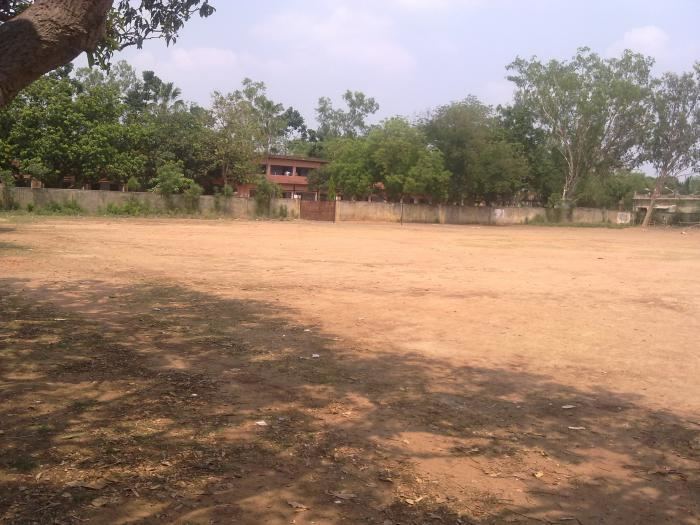District Birbhum PIN 731214 Elevation 54 m | Time zone IST (UTC+5:30) Telephone code 91 3463 | |
 | ||
Ilambazar is a census town with police station in Birbhum District in the Indian state of West Bengal. A traditional weaving and trading centre it serves as a gateway to Birbhum district.
Contents
Map of Illambazar, West Bengal
Geography
Ilambazar is located at 23.63°N 87.53°E / 23.63; 87.53. It has an average elevation of 54 m (177 ft).
Ilambazar is located on the northern bank of Ajay River. It is on the four-lane Panagarh–Morgram Highway. The highway has been completed at a cost of $150-million. A road connects to Bolpur/Santiniketan and ( Suri - Kirnahar - Katwa ) Road
Most of the forests in Birbhum district are on laterite soil but the Choupahari sal forests in the Ilambazar area (area 13.9 km²) are on alluvial soil.
The forests around Ilambazar was on the verge of extinction in the nineties of the previous century but it has got back much of its flora and fauna. The villagers, living in 32 villages located inside the forest, have realised that they can make a living by selling plates (thalis) made of sal leaves and mushrooms (locally called toshor ghuti) both abundantly available in the forest. The forest department formed 12 ‘Bonosamrakshan committees’ (forest preservation committees) comprising the villagers and made them understand how their survival was linked with that of the forest.
History
Ilambazar developed as a trade mart because of its location at the junction of thoroughfares and the river front. It also had the advantage of being near to weaving centres. The English assumed the direct administration of the district in 1786 and the British East India Company had a factory at Ilambazar. At that time the French East India Company also made a foray in the Ilambazar area. It helped in the weavers securing higher prices.
Birbhum was one of the worst sufferers of the famine of 1770. Many hundreds of villages were entirely depopulated and in the towns not a fourth of the population survived. In the late 18th century, Birbhum and surrounding areas were affected by famines followed by a peasants’ insurrection. Although the insurrection was against zamindars and the government, trade marts were also plundered. In June 1789, Ilambazar, the chief manufacturing and trade centre in the area was sacked in open dylight. Ilambazar survived the sack of 1789 and re-emerged as a busy manufacturing and trade centre since the opening of the 19th century.At the time of Shewill’s survey operations it contained a population of 2,235 souls.
Cotton goods were not the only items of trade. In the mid 19th century, John Erskine of Ilambazar was one of the leading sugar manufacturers and exporters in the area. The Erskine family also had indigo factories. Ilambazar was once an area for indigo cultivation, traces of which can still be found.
Temples
The Gouranga temple at Ilambazar, and the Shiva temple at Ghurisha are amongst the state protected temples in the area. Rameswara Shiva temple is one of the three temples at Ilambazar with exquisite terracotta work. During the late 1940s Ilambazar terracotta temples were photo-documented by artist Mukul Dey of Santiniketan.
Craft
John Erskine and John Cheap took an important part in the development of the shellac industry. Erskine constructed a large shellac and lac dye factory at Ilambazar and as Cheap retired from the field, virtually monopolized it. The lac was collected from the forests and lac dye and shellac manufactured in the factory at Ilambazar. Lac artisans, locally called nuris, worked out a variety of lacquered items namely, cups, inkpots, bracelets and toys ‘of excellent design and craftsmanship’. Some of the ornamental items were sent to the Great Paris Exhibition of 1855. However, Sherwill noted that ornamental items were manufactured at Ilambazar by only two men. The descendants of fine lacquer craftsmen are still there at Ilambazar.
The National Institute of Fashion Technology has trained almost 2000 artisans from various parts of Birbhum in handicraft and handloom as a part of its consolidated cluster development project undertaken in collaboration with the ministry of rural development and its counterpart in the state. Estimated at Rs 15 crore this project is underway in five selected parts of the country. The main project in the eastern zone was implemented in Bolpur, Nalhati, Ilambazar and Rajnagar.
